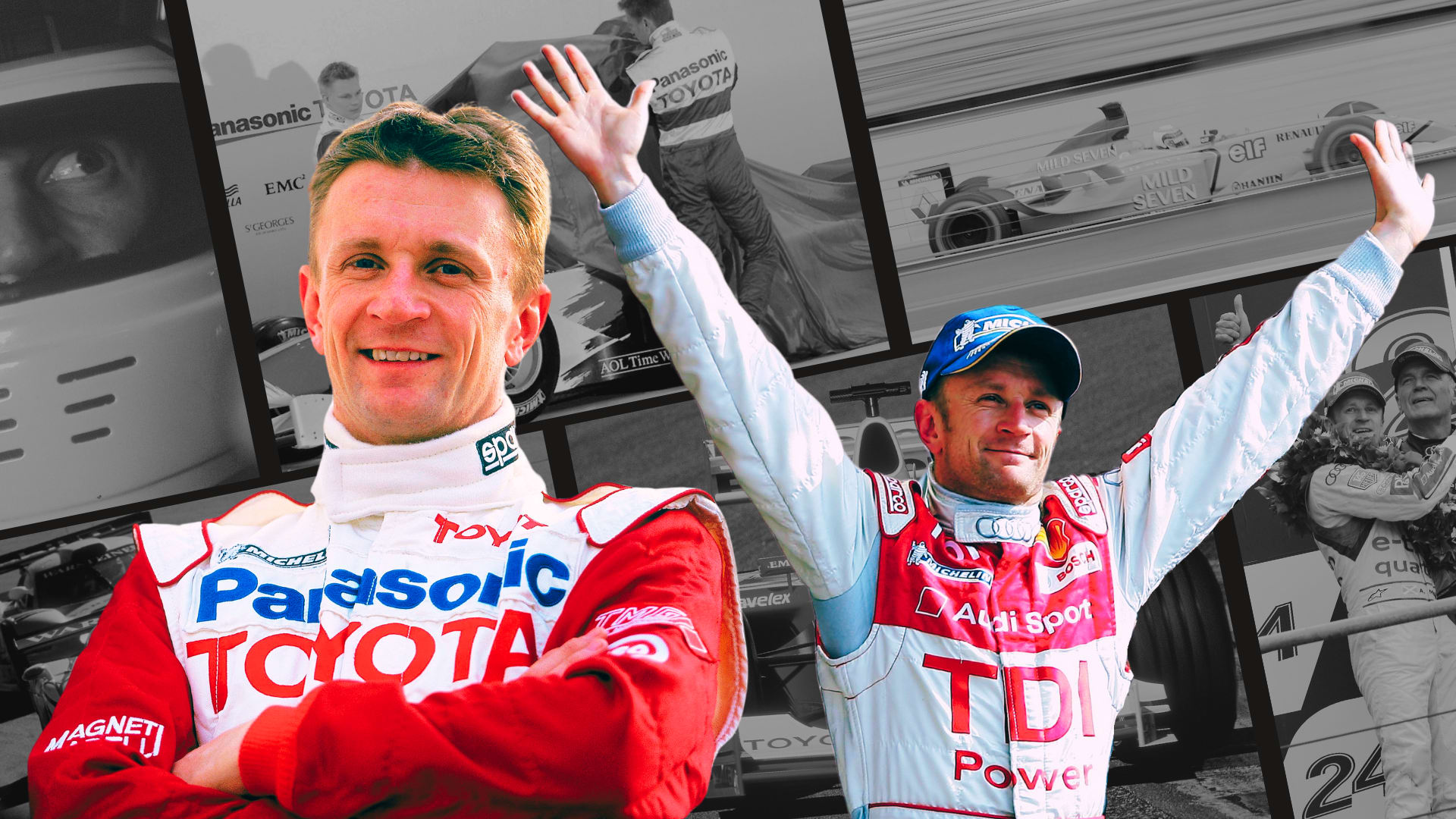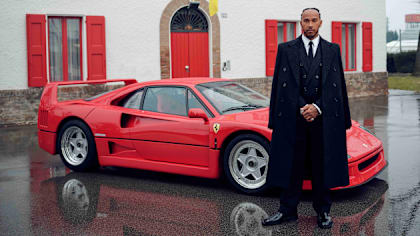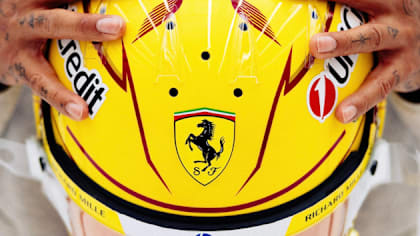
Technical
ANALYSIS: What we learned from a first look at the brand-new Alfa Romeo C43

Share

Alfa Romeo offered a first look at a 2023-spec Formula 1 machine when they unveiled their new car on Tuesday – but what changes have the team made? Mark Hughes examines the C43.
Alfa Romeo Technical Director Jan Monchaux is quite protective about the secrets of his new ‘baby’, the C43, which will carry the team’s hopes this season. Although there is a general visual similarity to last year’s car, it’s different in a couple of key areas and it is these differences, he believes, which will unblock the aerodynamic bottleneck that defined the limit of the C42’s potential.
Combining what Monchaux was willing to say at the car’s launch and looking at the first images suggest that the team have radically changed the cooling route to create a less aerodynamically disruptive path for the airflow directed between the rear tyres. Part of this redesign looks to have involved re-siting how the total radiator area is distributed within the car and part of it may well also have involved an increase in the car’s wheelbase. It has also, confirms Monchaux, involved a substantially redesigned rear suspension.
“Seeing the evolution of the cars under last year’s regs we had to acknowledge that there were better solutions of how to manage the flow going to the diffuser,” says Monchaux. “The flow going between the rear tyres, because of a decision we had made on an architectural point, meant we were stuck in a corner.”
The implication from the placement of the radiator cooling louvres is that more of the radiator area has been moved up along the car’s centreline, as seen on the Mercedes, Red Bull and Alpine last year, among others.
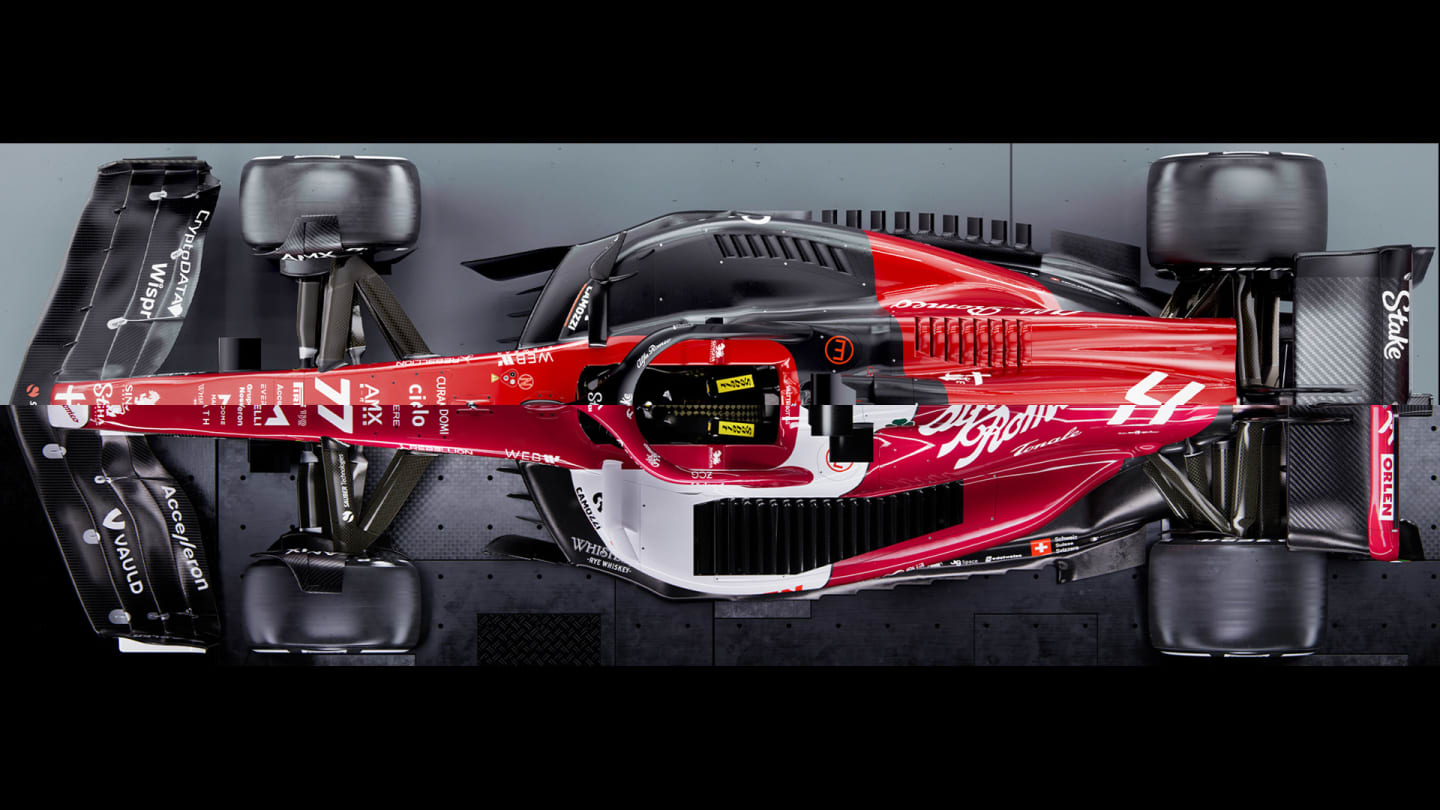
A top-down comparison of the C43 (top) and C42 (bottom). Louvres behind the cockpit of the C43 suggest that radiator area has been moved towards the car’s centreline. The slimmer head of the C43’s sidepod teardrop shape also suggests this, and perhaps a lengthened wheelbase. The C42 was the only car not running the maximum permitted wheelbase in 2022, which was lighter but limited the underfloor performance.
Last year the Alfa, like all the Ferrari-engined cars, carried much more radiator area low down and towards the front, defining the big, bluff sidepod fronts and low cooling outlets at the rear. The bluff sidepods were aerodynamically effective at creating the desired airflow outwash, keeping the flow around the front of the sidepods from interfering with that of the underbody. But the low cooling exits at the back created something of an aerodynamic bottleneck for the over-body airflow being sent between the rear tyres and over the top of the tunnels’ diffuser exits. Especially at high speed.
WATCH: Go onboard with Leclerc as he drives a classic Schumacher Ferrari in Abu Dhabi
That over-body flow between the rear tyres is crucially effective in how hard the underfloor is being made to work and therefore how much downforce it can create. The pressure differential in the air behind the diffuser and that coming through the tunnels helps define the speed of the underfloor flow. The faster the flow, the greater the downforce. The greater blockage to that over-body flow there is around the nether regions of the rear, the greater the limitation to the speed of the underbody flow. At high car speeds that area between the wheels will be effectively choked, unable to take any more airflow mass.
With more of the Alfa’s rear cooling exits moved up high, that over-body flow is less restricted than before. The suspension redesign has also cleared more space, though we’ve yet to see enough detail of that to know whether the previous pushrod arrangement has been retained or whether there has been a switch to pullrod.
With the radiator area moved up around the car’s shoulders, there is now a Red Bull-like ‘cannon’ within the engine cover/sidepod directing the cooling air to the rear around the central exhaust pipe.
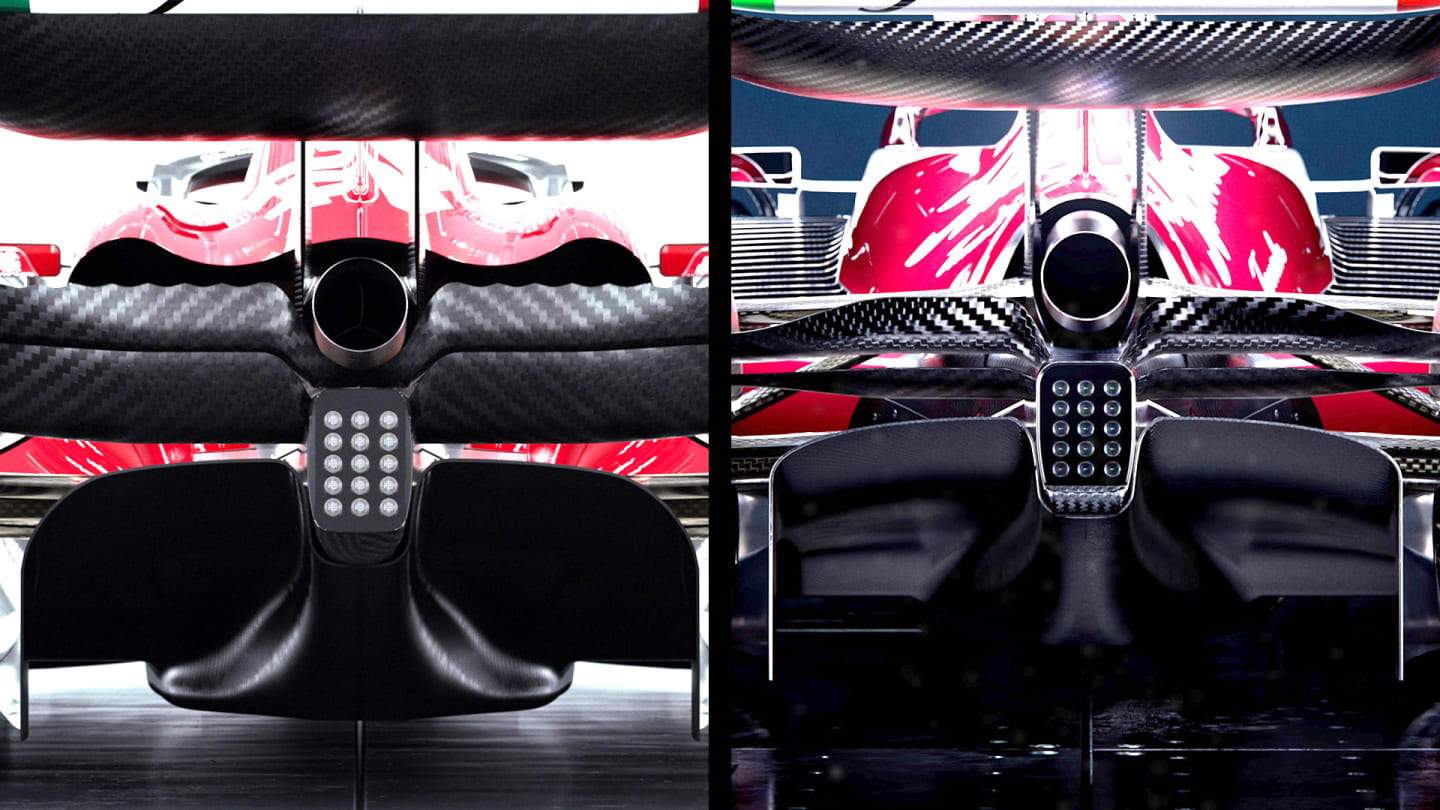
The rear of the C43 (L) compared with that of the C42 (R)
In plan view the sidepods are still teardrop in shape but with a less fat head than last year, again suggesting the rearrangement of the radiator area and possibly also an increase in wheelbase.
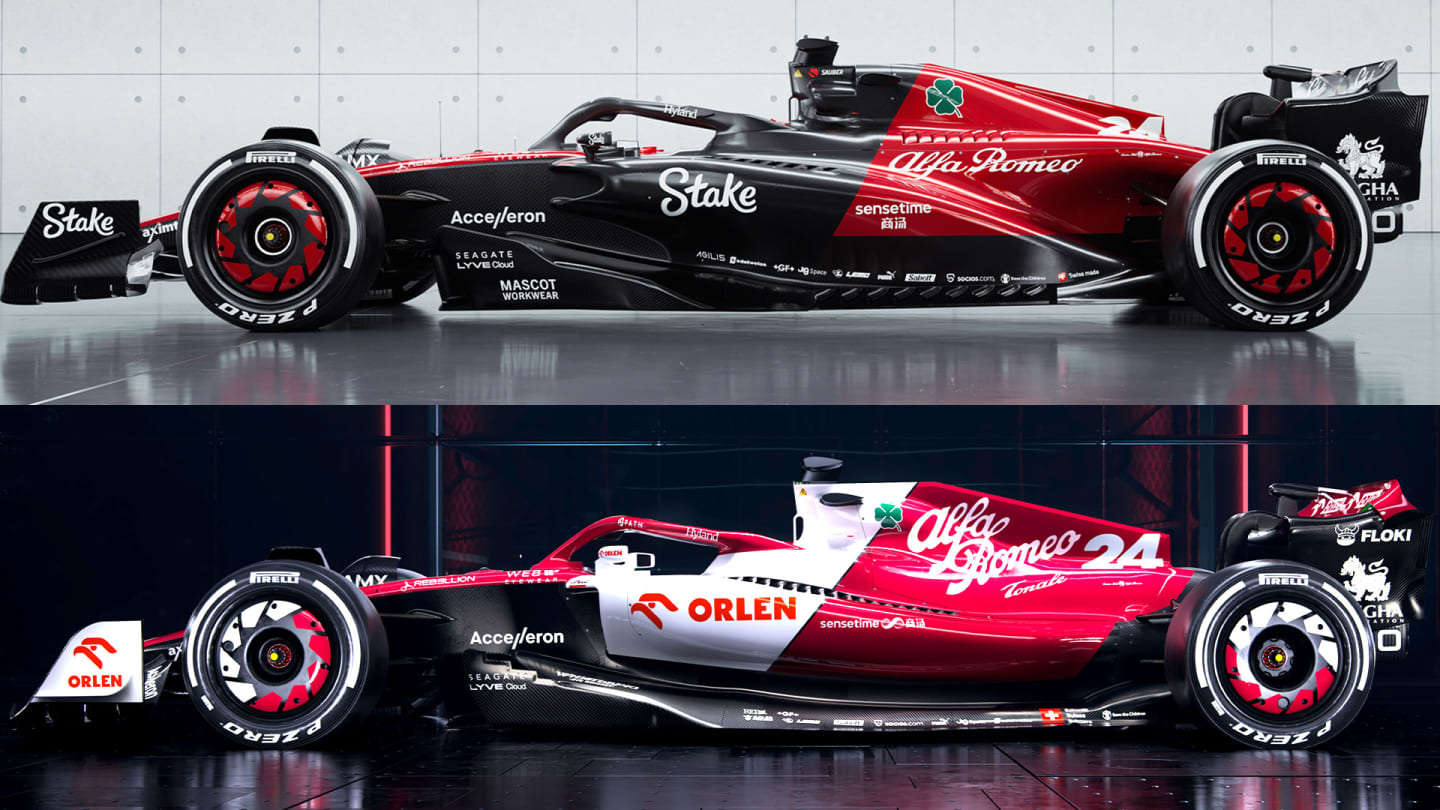
A side-on comparison of the C43 (top) and C42 (bottom)
Looked at from straight-on there is a bigger undercut beneath the radiator inlets, which should accelerate that lower body flow harder. All further benefitting that rear-end aerodynamic performance.

A straight-on comparison of the C43 (L) and C42 (R)
“The changes in the cooler arrangement opens the door to quite a change to us in terms of bodywork,” Monchaux confirms, “and how we handle the hot air coming from the radiators. It’s not a revolution – similar solutions were on the grid last year but it’s something we couldn’t implement without a major change of the architecture.
ANALYSIS: Why have Ford decided to come back to F1 now – and what does it mean for Red Bull?
“Some of the aero weaknesses we had were effectively in high-speed performance – and this has significantly improved with the new bodywork and the new way of working the floor between the rear tyres.”
There will be downsides as well as benefits to the changes. Moving more of the radiator surfaces to the car’s shoulders will increase the centre of gravity height. Increasing the wheelbase – if indeed they have – will increase the total weight. But if the aerodynamic benefits overcome those mechanical limitations, there is no question of priorities to be answered and Alfa will be free to chase the gains that were unavailable last year.
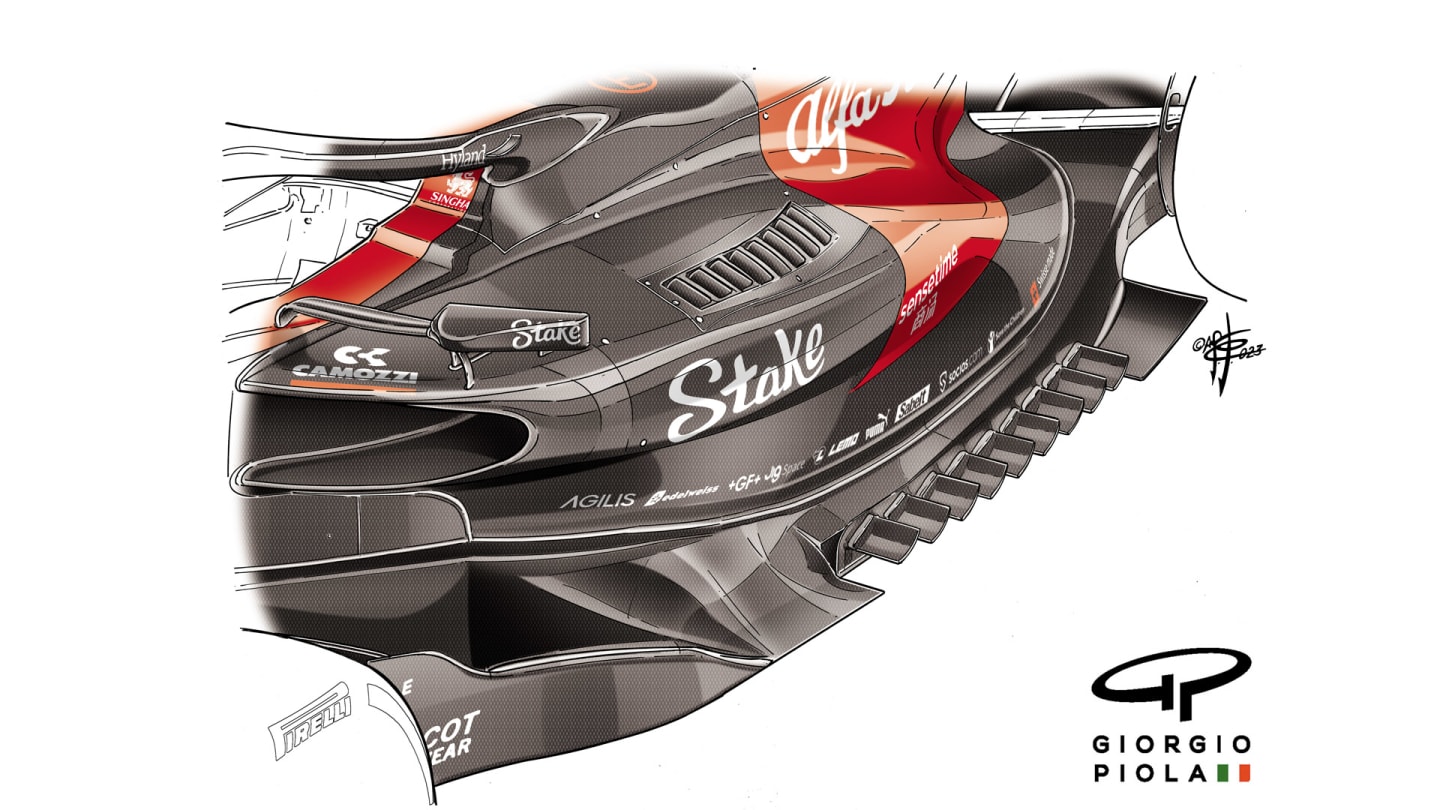
Giorgio Piola's illustration of the Alfa Romeo C43's floor - a shape of things to come?
YOU MIGHT ALSO LIKE
News Williams sign Oliver Turvey from McLaren in test and development role

Video WATCH: Tech Talk Retro – How some of the most iconic cars in F1 history changed the sport
News ‘Today we start a new era’ – Hamilton shares emotional message after ‘dream’ first appearance for Ferrari
News Hamilton shares first look at striking helmet design for new Ferrari chapter
